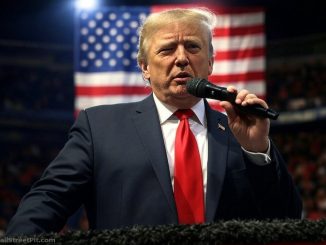- Kyle Bass views recent market drops amid tariff announcements as short-term pain in a “controlled burn” strategy, aimed at cutting the $2 trillion U.S. deficit by $1 trillion through $300 billion to $600 billion in tariff revenue and $400 billion to $600 billion in spending cuts.
- He attributes past economic strain to the Fed’s balance sheet growth from under $1 trillion in 2008 to $9 trillion by 2022, causing 40% inflation and a 50% housing price surge, now contracting to $6.7 trillion, with tariffs pressuring global trade partners like Vietnam to renegotiate.
- Bass predicts a 1.5% to 2% GDP decline over two quarters, signaling stagflation, but sees long-term growth potential as falling rates and energy costs ease burdens, with a market floor possibly 5% to 6% lower.

Kyle Bass, founder and chief investment officer of Hayman Capital Management, appeared on CNBC to discuss the market’s reaction to recent tariff announcements, framing them as part of a broader economic reset that could ultimately benefit the U.S. economy despite short-term pain. He pointed to the Federal Reserve’s balance sheet, which ballooned from under $1 trillion in 2008 to $9 trillion by 2022 during COVID, driving 40% inflation and a 50% surge in housing prices under Biden, before shrinking to $6.7 trillion through quantitative tightening. Bass argued that this monetary contraction, combined with tariffs, is spooking investors, with markets down 8% to 10% in just days, pushing many into technical bear territory, yet he sees the tariffs as a thoughtful strategy to address the $2 trillion federal deficit on $4.5 trillion in revenues.
Bass views the tariffs as a dual-purpose tool, akin to a currency devaluation, capable of generating $300 billion to $600 billion in external revenue while forcing global trade partners to renegotiate terms, as evidenced by Vietnam’s request for a 90-day reprieve. He suggested that alongside potential government spending cuts of $400 billion to $600 billion under initiatives like DOGE led by Elon Musk, the yield curve will steepen as the Fed, typically late to act, responds to an anticipated GDP drop of 1.5% to 2% over the next two quarters, creating a stagflationary environment. Bass believes this “controlled burn” approach, supported by Trump and Treasury Secretary Scott Bessent, could cut the deficit by $1 trillion, laying a foundation for long-term growth, even as the Nasdaq (^IXIC) and S&P 500 (^GSPC) sit at year-to-date losses of 16%-17% and 13.5%, respectively.
The market’s immediate reaction reflects fear, but Bass remains optimistic, predicting a potential floor another 5% to 6% lower, where he’d advise younger investors – those aged 28 to 35, struggling with high housing costs and uninterested in stocks – to start buying. He acknowledged the risk: if the top 10% of households, driving 50% of consumption (68% of GDP), curb spending, jobs could falter, threatening the economic stability needed for homeownership. Yet, Bass sees falling interest rates, mortgage rates, and energy costs as counterbalances, with delegations from around the world already flocking to negotiate with Trump, signaling the tariffs’ leverage. This restructuring, he argued, is essential to reverse the cost-of-living crisis fueled by past Fed and Congressional policies, promising a stronger economic base despite the near-term turbulence.
WallStreetPit does not provide investment advice. All rights reserved.
- Bulenox: Get 45% to 91% OFF ... Use Discount Code: UNO
- Risk Our Money Not Yours | Get 50% to 90% OFF ... Use Discount Code: MMBVBKSM
Disclaimer: This page contains affiliate links. If you choose to make a purchase after clicking a link, we may receive a commission at no additional cost to you. Thank you for your support!





Leave a Reply